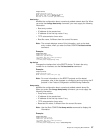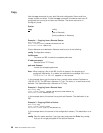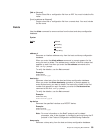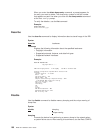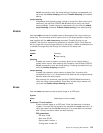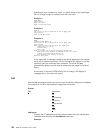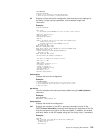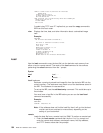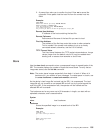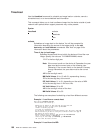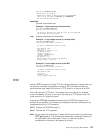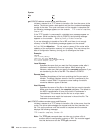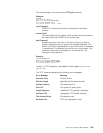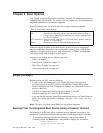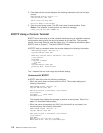
2. A prompt then asks you to confirm the load. Enter no to cancel the
command. Enter yes to load the boot file from the remote host into
RAM.
Example:
load remote
Remote Host Address [0.0.0.0]? 128.185.210.125
Remote Pathname[]? /loads/vl.ldc
First Hop Address[0.0.0.0]? 128.185.208.38
TFTP Timeout Value [3]?
Are you sure you want to reload the gateway(Yes or No): yes
Remote Host Address
IP address of the host containing the boot file.
Remote Pathname
Pathname and filename of the boot file you want to load.
First Hop Address
The address of the first-hop router that routes to other networks.
This is needed if the remote host address is not on a directly
connected network; otherwise, use the 0.0.0.0 default.
TFTP Timeout Value
The time interval between the TFTP packet retransmissions. Longer
values (longer than the default value of 3) may be needed when
booting over or across slow networks or serial lines.
Store
Use the store local command to store a compressed image in erased banks of the
IBD. The console displays the number of bytes that were stored. To verify that an
image was stored, use the list ibd command.
Note: The router stores images sequentially from bank 1 to bank 4. When all 4
banks are full, you receive an error message. To create space in a bank, use
the erase loadname or erase bank-number command.
As the device’s load image file is stored into the IBD, it is compressed. The load
image file will not overwrite a non-erased IBD and will not try to write beyond the
end of the IBD. If the compression fails, the operator will be notified and the
affected IBD will be erased.
The loadname can be any name up to 80 characters in length, can start with an
alphabetic character, and is case-sensitive.
Syntax:
store
local
loadname
loadname
Stores the specified image in an erased bank of the IBD.
Example:
store local
Loadname: test
Will start storing at bank #2
.
.
.
Number (dec) bytes used
Boot config>
Chapter 8. Configuring Boot CONFIG 105



